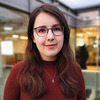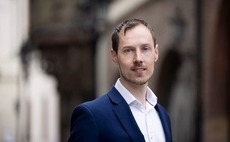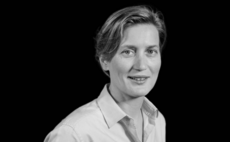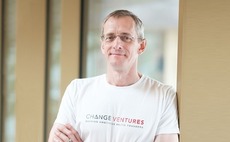
GP Profile: Gyrus looks to next steps after debut pandemic fundraise
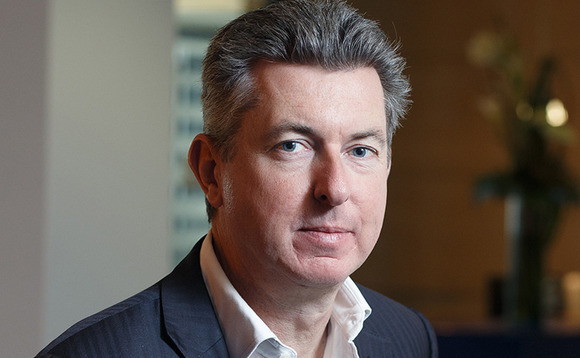
After raising a debut fund during the coronavirus pandemic, Gyrus Capital co-founder Guy Semmens speaks to Unquote about the healthcare- and sustainability-focused GP's first-time fundraise, its deal pipeline, and the lead-up to its next fund.
Geneva-headquartered Gyrus Capital announced the final close for its debut fundraise, Gyrus Investment Programme, in August 2021 on EUR 430m. The programme comprises Gyrus's Principal Fund and the GP's co-investment Cortex Fund.
Semmens admits that the timing of the fundraise was challenging. "We launched Fund I just as Europe went into lockdown in the spring of 2020," he says. "Any first-time fund requires an element of hope in the face of overwhelming obstacles. Throw in a travel ban and an international lock-down and really… either you laugh or you cry."
Much of the fundraise was done virtually, which brought some efficiency gains. "The positive part is that fundraising this way is much more efficient," says Semmens. "Instead of sitting down to have the meeting, taking a plane, you can get in front of people much quicker, and people are much more available. So we could reach those who wanted to be reached much more efficiently."
However, the virtual nature of the fundraise did have an impact on the composition of the vehicle's LP base, says Semmens. "Normally we would have expected 30-40% of our LPs to be from the US, but this time we just had one. A combination of being a first-time fund and the lack of ability to get to the US and engage with people has been a disaster. People understandably have questions around a first-time fund and team, and the inability to get in front of them compounded the difficulty."
The LP base of the debut fund is therefore 97% European, including six European funds-of-funds. Family offices and pension funds joined the fundraise in its later stages. "The LPs who came in are almost without exception existing relationships with people we have known for 10 to 20 years," says Semmens. "They therefore had the confidence to go with us despite the first-time-fund issues and the inability to meet face-to-face. Those issues dissipate the better you know people and the longer the relationship goes on."
In spite of the challenges, Semmens says that the GP's deal portfolio helped the firm to keep momentum: "I think we gained traction from the quality of the investments we were doing, which were a result of the quality and experience of the team and the approach. A year later we came out on top – but in Q2 2020 I couldn't see my way through the minefield."
The next fundraise
Gyrus was formed in early 2019 by former Argos Wityu (previously Argos Soditic) partner Guy Semmens and former Altaris partner Robert Watson. "The opportunity to start afresh, after 25 years, doesn't come to everyone," says Semmens. "I think we had the right balance of experience and a fresh approach. Much younger, and it would not have been possible. Much older, and the motivation might not have been there to reinvent the strategy and team, and go again. It was a perfect moment and the credit for identifying that goes mostly to my partners who saw the opportunity and had more to lose than I did."
Following the completion of the team's first fundraise, Gyrus expects to turn its attention to raising its next fund before too long. The GP is likely to come back to market in 2022, with initial discussions taking place with existing LPs in Q4 2021. "We are aware that H1 2022 will be extremely busy with larger funds coming back to market, so H2 might be a preferable time for us to come back, but we will take it at our own pace," says Semmens.
The GP expects its next Investment Programme to be larger than its EUR 430m predecessor, with a target of more than EUR 500m. Gyrus's hybrid fund structure comprises the Principal Fund – which has a 2% / 20% structure – alongside its deal-by-deal committed capital vehicle known as the Cortex Fund.
Semmens favours this structure, but says that the GP will gather views from LPs before implementing it for its second fundraise. "The hybrid fund structure works for LPs, the alignment is good as it lowers the J-curve," he says. "It also focuses us on a deal-by-deal basis, so we look at an asset basis not a portfolio basis. If we were to keep the structure for Fund II, we would talk to existing investors about how they view it first. We might refine it, but I would love to retain it. I really believe it is a better model for LPs and the GP."
Deal pipeline
Gyrus has three deals in the pipeline and expects to close one or two this year, plus a third in H1 2022, bringing the fund's total platform investments to seven. The firm's investment pace is usually roughly two or three deals per year. The GP concentrates on healthcare and sustainability investments, with equity ticket sizes ranging from EUR 20m to EUR 120m and an average ticket in the EUR 60m-70m range.
To be able to execute anything remotely sensible, we have to go off-market. There is no shortage of opportunity, it's just about competition and pricing" – Guy Semmens, Gyrus Capital
"Our sector focus on healthcare and sustainability – which we set out in 2018 – has benefited from Covid and the issues around it," says Semmens. "These topics have never been as much in focus as they are today and there is a vast amount of activity and interest around those sectors."
The fact that Gyrus's sectors of focus have risen in prominence over the course of the pandemic means that valuations have risen, too. "Well-managed conventional assets in those sectors that are intermediated are going at all-time record highs at the moment," Semmens notes. "To be able to execute anything remotely sensible, we have to go off-market. There is no shortage of opportunity, it's just about competition and pricing."
Gyrus generally makes deals via primary buyouts, carve-outs and one-on-one relationships, while SBOs are unlikely to form a major part of its deal sourcing.
Meanwhile, the pandemic has affected where in the world the GP sources its deals, Semmens says, although it has also presented new opportunities: "Geography is important. When we started out, we expected 75-80% of our investments to be from the UK, Ireland, Switzerland and northern Italy. Once Covid was thrown into the mix, we had lower expectations for deals from the UK and Ireland."
However, the GP was able to take advantage of other market openings, says Semmens. "Switzerland and northern Italy have been above our expectations in terms of opportunities – some investors couldn't get there, just as we were not able to get to the UK. On balance, the volume is probably what we expected – but the geographical mix is very different."
Sustainable growth
Gyrus initially had six team members, and has since hired two more. The GP announced in March 2021 that it had appointed GCA Altium's Christian Wipf and Matthias Terribilini from Rothschild & Co to bolster its investment team, as reported.
"I can see the team becoming 10 people over the next 12 months, but we would not want to get bigger than that currently, since at this size the team is functional and easier to manage," Semmens says.
The firm has not suffered the capacity constraints experienced by many GPs as the pandemic hit, Semmens notes: "One of the good things about being a new manager is that we have a limited and concentrated portfolio, we don't have any legacy investments, or especially any difficult legacy investments. It is intensive but also provides time for new opportunities and the things we need to do on the portfolio."
We are not an impact fund, but what we do does have an impact on our businesses and their clients, and we want to report on this in a way LPs and stakeholders can understand" – Guy Semmens, Gyrus Capital
ESG is also a topic for the firm's future development, although it has already been a necessary theme of Gyrus's healthcare investments given the sensitive nature of the industry, according to Semmens. "The challenge for PE is not ESG per se, since PE has historically been strong on governance, but the challenge is how to quantify and report it," Semmens says, adding that this is something that Gyrus has developed over time. "We have worked through how we demonstrate ESG criteria in a qualitative and quantitative way this year, and how we report back to investors. We are not an impact fund, but what we do does have an impact on our businesses and their clients, and we want to report on this in a way LPs and stakeholders can understand and use for their purposes as well."
Realising returns and completing exits will also be a natural step in Gyrus's ongoing growth. "It's early days, but we need to demonstrate value on Fund I before Fund II," says Semmens. "We did a recap on DuPont in December and might do a recap on another company before the end of this year. Our holding periods will likely be four to five years on average."
Gyrus's portfolio currently comprises four companies: UK-headquartered cardiac medical device producer Corcym (formerly the heart valve business of LivaNova); PwC Italia's consulting business; environmental consultancy DuPont Sustainable Solutions; and central nervous system (CNS) pharmaceuticals producer Essential Pharma.
Latest News
Stonehage Fleming raises USD 130m for largest fund to date, eyes 2024 programme
Sponsor acquired the public software group in July 2017 via the same-year vintage Partners Group Global Value 2017
Stonehage Fleming raises USD 130m for largest fund to date, eyes 2024 programme
Czech Republic-headquartered family office is targeting DACH and CEE region deals
Stonehage Fleming raises USD 130m for largest fund to date, eyes 2024 programme
Ex-Rocket Internet leader Bettina Curtze joins Swiss VC firm as partner and CFO
Stonehage Fleming raises USD 130m for largest fund to date, eyes 2024 programme
Estonia-registered VC could bolster LP base with fresh capital from funds-of-funds or pension funds

